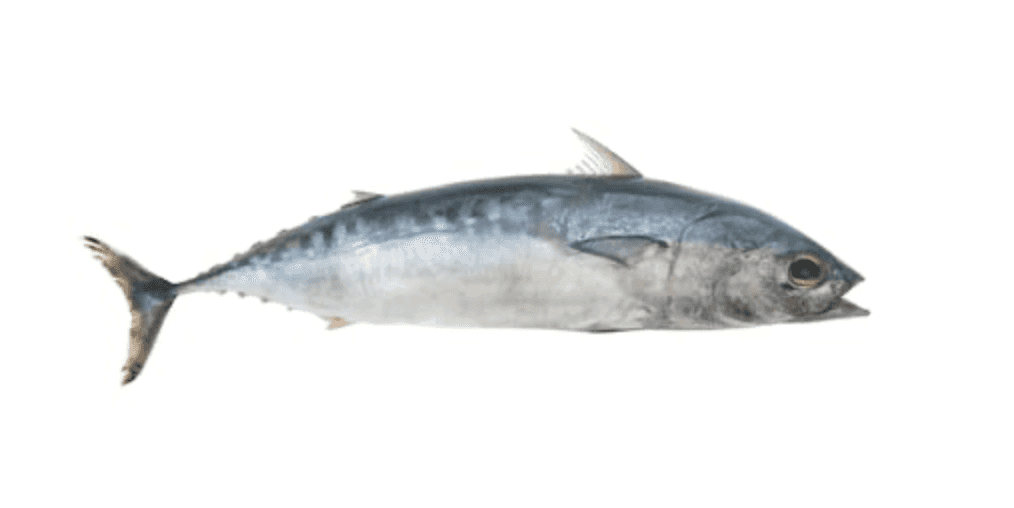Bullet Tuna

Species Details
Auxis rochei
Scombridae
Perciformes
circumtropical
2 - 4 lbs.
8" - 20"
About Bullet Tuna
The bullet tuna, also known as bullet mackerel, is a saltwater fish with a bluish back turning to deep purple on the head. While the fish is dark bluish above, it has a silvery belly. You can know it by its two dorsal fins and short, purple pectoral fins. The fish also has a scaleless area with a pattern of fairly broad, vertical bars. The bullet tuna’s diet mostly consists of anchovies, planktons, fish larvae, and small cephalopods (e.g. squid, cuttlefish).
Interesting Facts on Bullet Tuna
- Compared to the bigger yellowfin or bluefin tuna, the bullet tuna species is smaller and more slender.
- The largest recorded size of this fish is 20 inches found in the East Atlantic. Because of its relatively smaller size, the bullet tuna often moves in schools.
- It is a highly migratory species which is why you can find this fish worldwide in tropical and subtropical waters.
- Although they have their diet of smaller fish, cannibalism is common in the bullet tuna species.
- Bullet tunas are considered important prey for commercial tunas because of their abundance.
Bullet Tuna Size
The maximum length of a bullet tuna is 20 inches. These relatively larger catches are mostly found in Japan, one of the best places this fish can be caught. On average, the size of this fish species is 12 to 14 inches.
Habitat and Distribution
The bullet tuna is a circumtropical species which means that they can be typically caught in coastal waters and around islands. Anglers can fish for them in equatorial areas of the Atlantic, Indian, and Pacific Ocean. The bullet tuna is so widely distributed that you can find it as far north as Norway and as far south as the waters of South Aftrica. Fishing for the species has been recorded from the Gulf of Maine, east coast of North America, and Mar del Plata, off the Atlantic coast of South America.
The bullet tuna is an oceanic fish that thrives in warm waters. Bullet tuna larvae have the highest temperature tolerance among tuna species: at least 70.9ºF to 86.9ºF, although their optimum temperature is at 80.6ºF to 82.2ºF. Spawning of this species varies from region to region but larvae commonly mature from May onwards. In the straits of Florida, spawning season begins in February. Bullet tuna has an average range of 31,000 to 103,000 eggs per spawning, depending on the fish size.
Bullet Tuna Fishing Technique
If anglers are wondering how to catch the fish, they are mainly caught by gillnet, handline, trolling, and small-scall longlines. A wide variety of nets like traps, beach seines, purse seines, gill or drift nets, ring nets, and otter trawls can be used to catch this species. The bullet tuna is usually caught as a by-catch while fishing for bigger tuna species like yellowfin tuna. Since not a lot of anglers record fishing bullet tuna, there is an unidentified quantity of bullet tuna in the Atlantic.






